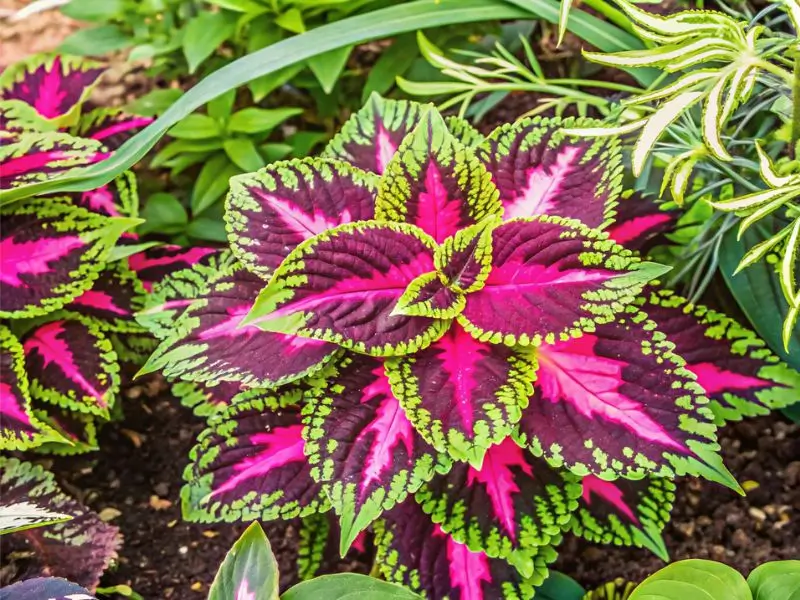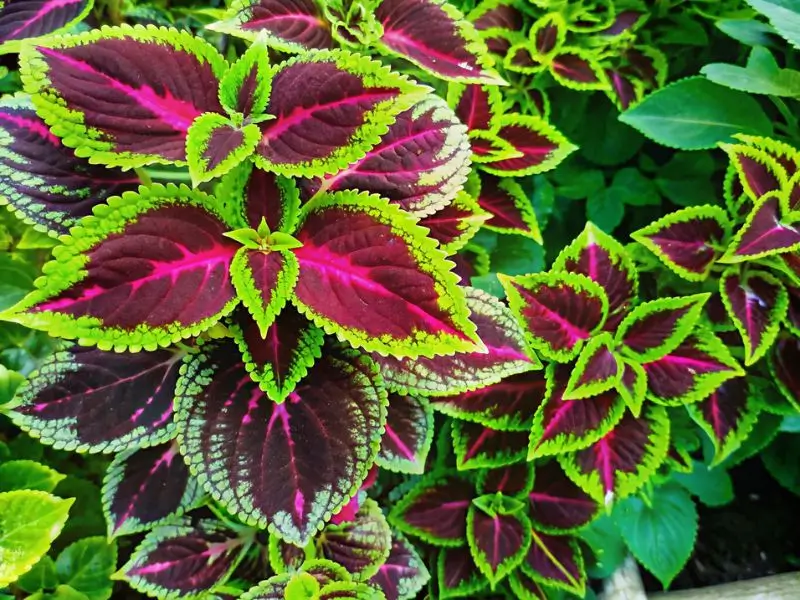
I see a lot of folks online looking for a black dragon houseplant, and maybe you’re one of them. Today, I’ll discuss possible fakes, real relatives, gardening tips, and a few myths. I’ll also drop casual remarks like “No kidding!” to keep things fun. Honestly, many of us just want a rare ornamental plant with dark leaves. Let’s see if we can answer, Is the black dragon plant real? once and for all.
Table of Contents
Introducing the Mysterious “Black Dragon Plant”
Unraveling the Myth Surrounding the Black Dragon
It’s tough to stay calm when someone claims a plant has leaves so bold it looks like a supervillain’s pal. Right now, people keep asking, Is the black dragon plant real? Some say they’ve spotted it in local nurseries, but opinions vary.
I’ve stumbled on photos labeled “black dragon,” yet many turn out to be alocasia “dragon scale” or another dark-leaf indoor plant. The term “black dragon” suggests a fantasy vibe. Folks can’t shake the question: Is the black dragon plant real? in a true botanical sense?
I’ve spent rainy days scrolling plant forums. Most members are doubtful but intrigued. Keep reading to see how we separate fact from fiction in this short guide.
My Personal Experience
Dark foliage is mesmerizing, but hype often causes confusion. Whenever I search for the phrase online, I see inconsistent images. That leads me to wonder again: Is the black dragon plant real? or is it just fancy marketing?
Common Names and Misconceptions
A lot of confusion stems from names. People sometimes call any deep-green Alocasia or a Syngonium “black dragon.” But that might not be an actual verified species.
Sometimes, “dragon” is confused with “dracaena,” totally different! That’s a key reason Is the black dragon plant real? remains a repeated question. Next, I’ll show how to confirm if you’ve found something genuine.
Gathering Reliable Research on the Black Dragon Plant
Searching Multiple Sources for Clues
Back when I first got curious about Is the black dragon plant real?, I’d spend hours browsing plant forums and official gardening websites. The results felt scattered. Sometimes I’d see people posting gorgeous photos labeled “black dragon,” but the pictures didn’t match up. So I made a habit of cross-checking everything:
- I’d check nursery catalogs to see if they list a legitimate rare ornamental plant with that name.
- I’d visit local gardening groups on social media, asking if anyone there had a confirmed black dragon.
Honestly, sometimes I’d stumble upon weird references, like deep-colored coleus or mislabeled Alocasias. That mix-up added to the confusion.
Official Databases and Plant Communities
I also looked at reputable botanical databases for any mention of a recognized species. For instance, the US Department of Agriculture’s plant database helps confirm whether a given plant name is valid in scientific circles. Spoiler alert: I couldn’t find direct evidence of a true black dragon listing.
Meanwhile, plant communities could be a gold mine. People often share personal photos, growth tips, and honest experiences. Combining those perspectives helped me piece together whether this plant is truly out there—or just an internet legend.ry.
Identifying Real vs. Fake “Black Dragon” Specimens

Characteristic Features of Authentic Black Dragons
If a real black dragon exists, people claim it might display:
- Extremely rich, near-black leaves in bright light.
- Metallic or lighter veins standing out against dark foliage.
- Possibly thick, textured stems indicating a “dragon” vibe.
No official species is labeled “black dragon,” though. Most references point to Alocasia, Syngonium, or begonia variations sold under that name. If you see a “black dragon,” confirm it with a plant ID collective or an expert horticultural site.
My Observations on Hype
I’ve seen countless posts with proud owners flaunting a “black dragon.” Many times, it’s just a dark hybrid mislabeled to drive sales. But it’s still fun imagining a plant that’s truly pitch black, right?
Spotting Red Flags: Fake Plant Scams
Some sellers exploit the buzz. They post overly enhanced photos claiming leaves turn black overnight. That’s rarely realistic.
- Tip 1: Be wary of suspiciously cheap “Black Dragon Seeds.” I once got carrots after planting these so-called seeds.
- Tip 2: Request pics of new growth. If they balk, that’s sketchy.
- Tip 3: Avoid sellers boasting “never needs sunlight” or “water once a month.” That’s not how most dark-leaf indoor plants function.
You can also check local plant communities on social media. Seeing real-life snapshots from fellow enthusiasts helps confirm authenticity.
Comparing the Black Dragon Plant to Other “Dragon” Varieties
Dragon Plant Synonyms and Look-Alikes
“Dragon” crops up in various contexts. There’s Dracaena draco, known as the dragon tree, with thick trunks and spiky leaves. Alocasia baginda “Dragon Scale” has scaly green leaves, not black. Syngonium “Mojito” might appear darker in certain light.
Is that enough to affirm, Is the black dragon plant real? as a unique species? Many folks believe “no,” suspecting it’s just a marketing term.
Growing Conditions and Unique Ebony Foliage
What’s the deal with ebony foliage?
- It pops against typical greenery.
- It creates a dramatic highlight on social media.
- People are drawn to unusual houseplant trends.
Often, these black leaves are really deep green or maroon. Sometimes, they lighten as they mature. Breeders keep searching for darker leaves or new shapes. That’s why “black dragon” might just be a catchy label for a sought-after houseplant that’s close to black in color.
Why the “Black Dragon Plant” Captivates Plant Lovers

Allure and Hype Around the Mysterious Name
Let’s be real: cool-sounding names attract attention. People hear “black dragon” and immediately imagine something fierce and exotic. Sometimes, plants get these dramatic labels just to spark curiosity.
When someone asks, Is the black dragon plant real?, it’s often because of the plant’s rumored blend of near-black leaves and bold textures. Even if a true black dragon remains elusive, the idea opens doors to darker-toned cultivars that make collectors do a double-take.
Personal Fascination and Community Buzz
I’ve chatted with fellow collectors who say they saw a neighbor’s “black dragon” that flashed dark, leathery leaves. Turns out, it might have been a deep-green Alocasia under a certain light.
Regardless, the stories keep spreading. Some folks claim that this plant’s name carries a bit of mystery, like stumbling on a rare treasure in a video game. For me, the hype is half the fun—searching store shelves, checking out friends’ plant corners, and hoping to discover a true black dragon gem.
Soil, Water, and Light Requirements for the “Black Dragon Plant”
Ideal Soil Mixtures and pH Levels
Suppose you got something labeled a black dragon—whether it truly is or not. Go with a well-draining potting mix.
- Mix standard soil with perlite for better airflow.
- Sometimes, people add orchid bark on top.
Try to keep the pH between 6.0 and 7.0, leaning slightly acidic. Don’t let the soil get muddy or waterlogged—root rot can appear quickly.
Balancing Watering Frequency and Sun Exposure
Thick-leaf plants typically hate excessive moisture. Do the classic finger test: if the top inch is dry, water. If still damp, wait.
- Moderate to bright, indirect light suits most alleged black dragons.
- If leaves wash out in color, add more light.
- If they crisp, back off from direct sun.
This general care can apply to many dark-leaf indoor plants, especially since we’re still asking, Is the black dragon plant real?
Propagation, Maintenance, and Potential Issues
Propagation Techniques: Seeds, Cuttings, and Division (H4)
To multiply your supposed black dragon:
- Seeds – Watch out for scams labeled “Black Dragon Seeds.”
- Stem Cuttings – If it’s actually a Dracaena or Syngonium, water rooting is usually reliable.
- Division – Plants like Alocasia can be split if they have tubers or corms.
Each genus is unique, so identify your plant first. Don’t assume a one-size-fits-all approach.
Common Pests, Diseases, and Troubleshooting (H5)
Any mythical dragon flora can get pesky visitors:
- Spider mites (tiny webs, leaf discoloration).
- Mealybugs (cottony lumps at leaf junctions).
- Root rot (yellowing, mushy spots) from overwatering.
If leaves shift from near-black to dull green, add more light. If edges burn, reduce direct sun. Also, wiping leaves with diluted soapy water or neem oil can tackle pests.
Try small adjustments in placement or watering. Sometimes that little tweak is all your plant needs. And remember, we revisit the main query: Is the black dragon plant real? because if it’s an Alocasia or Syngonium, typical tropical care applies.
Is the Black Dragon Plant Real? Debunking or Confirming

Scientific Findings and Taxonomical Insights
Alright, let’s address it head-on: Is the black dragon plant real? Mainstream botanical databases don’t list it officially. It might be a hybrid or just a catchy nickname.
Expert Opinions on the Existence of the Black Dragon
Most plant professionals think “black dragon” is a marketing label. That said, horticulture never sleeps—new hybrids appear often. At the moment, though, we lack evidence for an officially recognized black dragon. If someone claims otherwise, I’d be cautious.
Frequently Asked Questions
- Is the black dragon plant toxic to pets?
Likely. Many aroids are dangerous if Fido nibbles on them. - Where can I buy a black dragon plant or seeds?
Trust reputable nurseries. Still, Is the black dragon plant real? enough to be sold authentically? That’s uncertain. - How fast does the black dragon plant grow?
If it’s Alocasia or Syngonium, growth is moderate in warm conditions with good lighting. - Are there other exotic black plants?
Yep. Black ZZ plants, black violets, or dark Alocasias can appear near-black under individualized care.
Final Thoughts and Extra Links
Still curious? Check this guide on Black Dragon Plant for more insights or look-alikes.
Meanwhile, the US Department of Agriculture’s official site offers data on recognized plant species—though you probably won’t see a “Black Dragon” there yet.
So, Is the black dragon plant real? After digging around, I lean toward myth or at least a loosely used name. That said, darker hybrids exist that are super stunning. If you ever find a truly jet-black beauty, share it—us plant lovers will be all over it!Happy hunting and watch out for scams. You never know when a carrot patch might sprout from “black dragon” seeds.

2 thoughts on “Is the Black Dragon Plant Real? – Complete 2025 Guide”
Comments are closed.